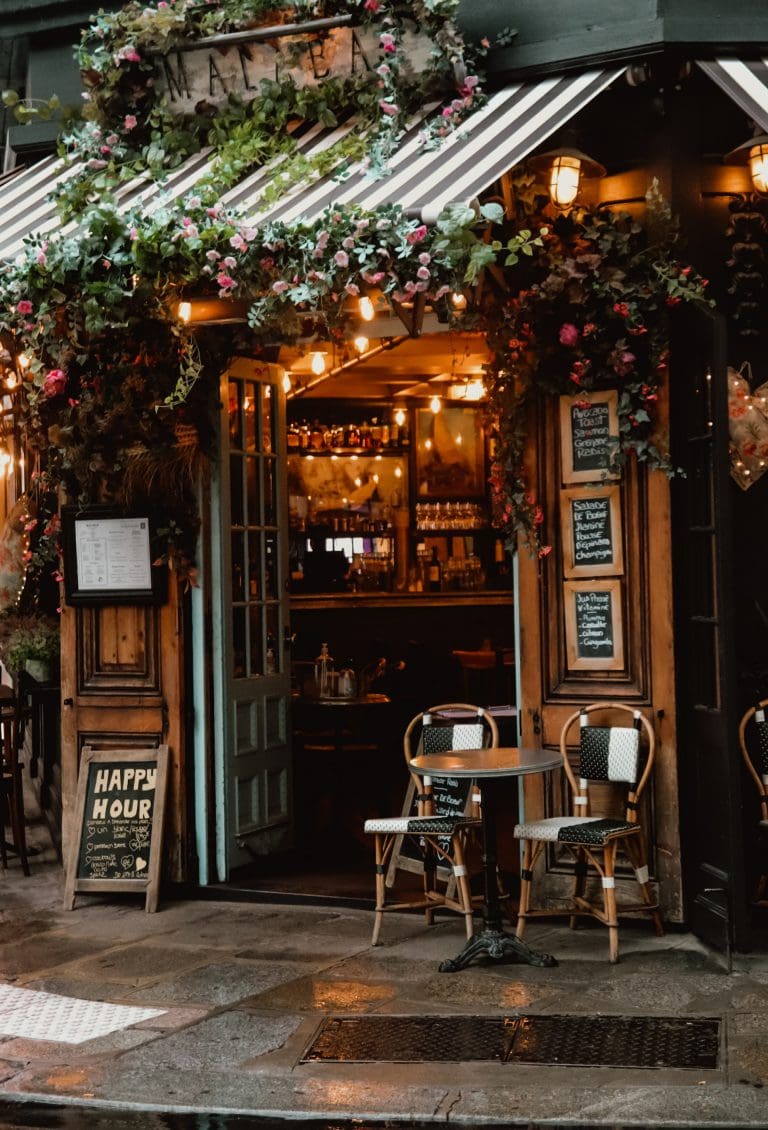The current station is the 3rd Montparnasse station. The first, built in 1840, was called Gare de l’Ouest and it was located on the current site of the Montparnasse tower.
The old train station
As traffic got busier, a second and larger station was built in 1852, in exactly the same place. It consisted of an arcaded portico, surmounted by two glazed naves, between two pavilions. It was built by Victor Lenoir, under the direction of the engineer Baude.
The station served Western Brittany and Normandy. All trains passed through Versailles. Leaving the station, the trains crossed on a 65m high viaduct, the Chaussée du Maine and the boulevards of Montrouge, then after about two kilometers, joined the west-belt station which connected the western line with the rails going round the city of Paris.
Bretons arrived in Paris en masse: the names of streets, cafés and brasseries testify to this settlement. It is also in Montparnasse that landed in 1868 a tenacious and inventive Breton, born in Uzel, engineer of the Ponts et Chaussées, named Fulgence Bienvenüe. He is considered the father of the Paris metro. His urban transport project had been selected and the huge construction site was therefore entrusted to him. At work from 5 o’clock in the morning, he succeeded in connecting, via line 12, the two hottest districts of Paris: Montmartre and Montparnasse.

The accident
On October 22 1895, an extraordinary accident took place. The Granville – Paris, made up of twelve carriages and carrying 131 passengers, was approaching Montparnasse station. Two baggage cars and a mail car were coupled to the locomotive.
The locomotive was driven by an experienced railway worker Guillaume-Marie Pellerin who had worked for the railways for 19 years. The train having left a little late, he wanted to arrive on time at Montparnasse and therefore did not slow down early enough. He and the chef de train Albert Mariette realized this, but it was too late: Mariette did try to activate the Westinghouse emergency brake, it did not work.
Only the brakes of the locomotive remained but it was not enough: the speed and the weight of the train is such that the convoy crushes the knockers, crosses the station, the terrace, breaks down the front wall and falls on the station of trams located 10m below. The composition of the train meant that all passenger cars remained in the station.
There were only five seriously injured among the train passengers: two passengers, a fireman and the two railway employees.
Unfortunately, the locomotive fell near a newspaper kiosk set up in front of the station, rue de Rennes: a passer-by was injured and Marie-Augustine Aguilard, who that day was replacing her husband at the kiosk, was killed by a piece of masonry that fell from the station.
The Société des Chemins de fer paid for her funeral and paid an annuity to her two children. Driver Pellerin was sentenced to two months' imprisonment and a fine of 50 francs. The chef de train Mariette was fined 25 francs.
The new station
As early as 1934, the SNCF noticed that the “old station” no longer met traffic needs. In the 1960s a total restructuring of the sector was decided. A new station would be built on Place Raoul Dautry and the entire sector would go through a large-scale urban planning operation. Rue Moulin de beurre, rue Perceval, rue de Médéah adn part of rue Vercingétorix disappeared in the process.
Three modern buildings surround this station, 1,000 apartments, Air France headquarters. The rail tracks have been covered by a slab which hosts a garden, “the gardens of the Atlantic” created by the landscape architects Brun and Péna. The garden is accessed by elevators, and we discover a large square lawn symbolizing the ocean, decorated with a monumental sculpture: the island of the Hesperides.
A multitude of water fountains, trees of different varieties, a large mirror reflects the light: everything here is technical prowess because everything rests on concrete a slab above the rail tracks!
The hall of this large ensemble is decorated with works by Vasarely. And last but not least, the destruction of the old station freed up land on which an iconic building was to be erected: the Montparnasse Tower.
Source: L?histoire en ligne



